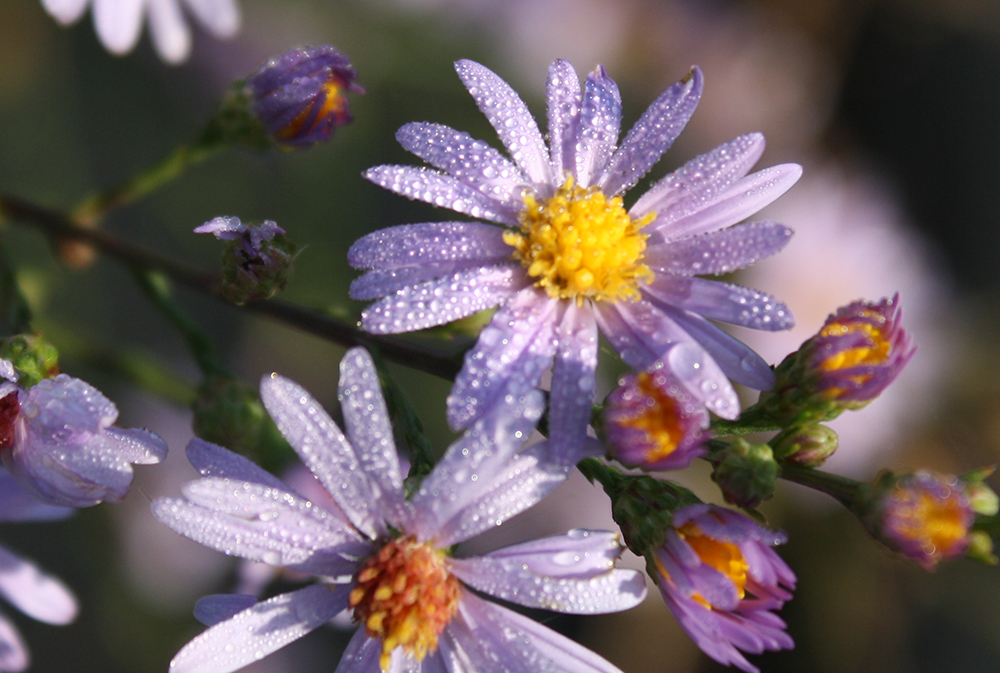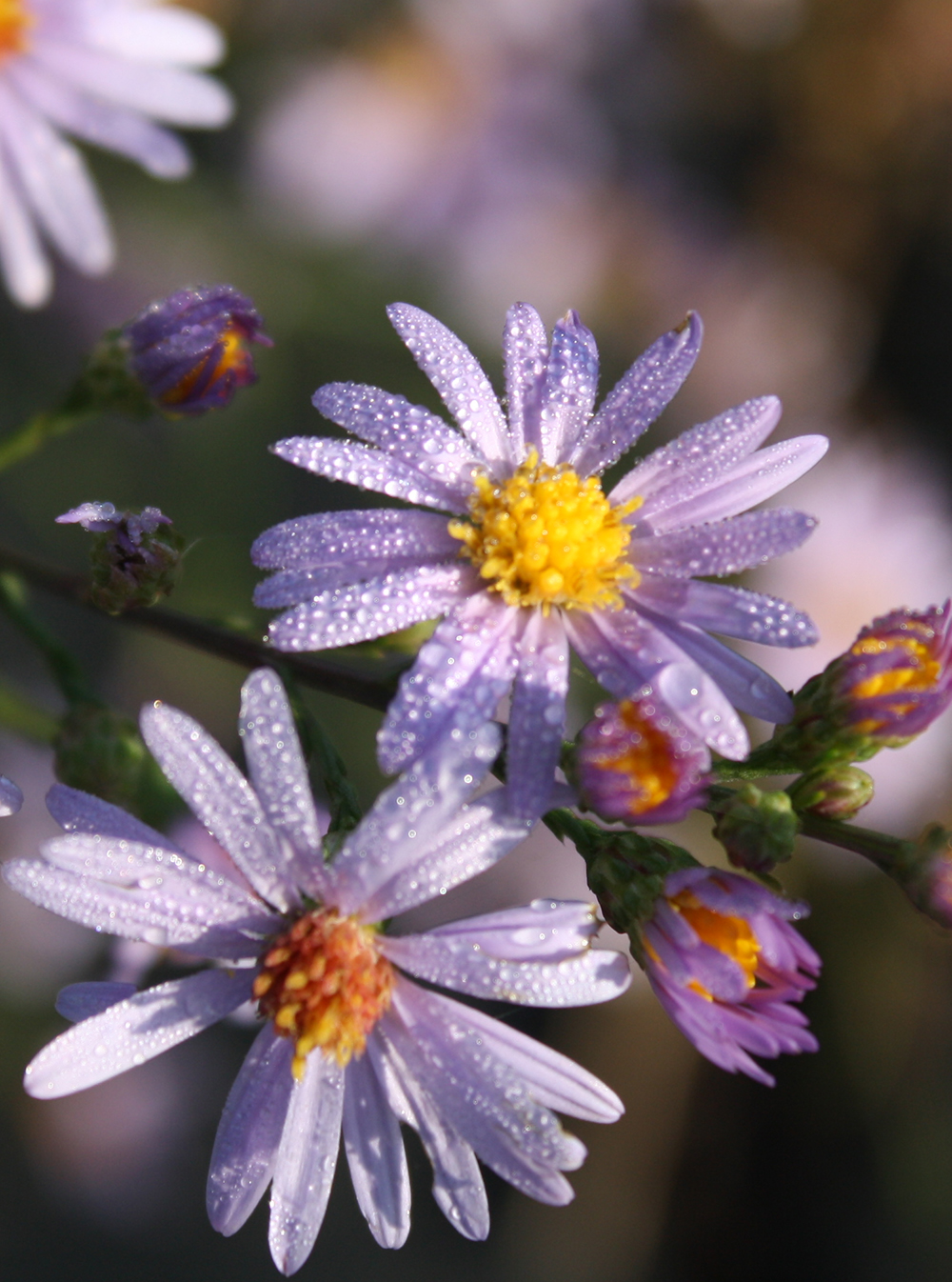Aster azureus
(Syn. Symphyotrichum oolentangiense)
Aster-Sky Blue
Aster azureus
(Syn. Symphyotrichum oolentangiense)
Aster-Sky Blue
This drought tolerant native aster blooms in unison with goldenrod and is useful in similar applications. Plants spread by seed and rhizomes to cover hillsides where they aide in erosion control. Bright sky blue flowers appear in 6" to 18Ó long panicles, attracting several types of pollinating bees and butterflies.
Plant Details
- Zone: 3 - 8
- Height: 24-36
- Spread: 18-24
- Exposure: Full Sun
- Soil Moisture: Low Water Needs, Moderate Water Needs
- Drought tolerant: Yes, Once Established
- Bloom time: Early Fall, Late Summer, Mid-Fall
- Foliage Color: Green Shades
- Flower Color: Blue Shades
- Fragrant: No
- Good Cut Flower: Yes
- Native: Native Species
- Deer resistant: Yes
- Rabbit resistant: No
- Bee-friendly: Yes
- Attracts butterflies: Yes
- Attracts hummingbirds: No
- Groundcover: No
- Roy Diblik Favorite: No
Plant Details
- Zone: 3 - 8
- Height: 24-36
- Spread: 18-24
- Exposure: Full Sun
- Soil Moisture: Low Water Needs, Moderate Water Needs
- Drought tolerant: Yes, Once Established
- Bloom time: Early Fall, Late Summer, Mid-Fall
- Foliage Color: Green Shades
- Flower Color: Blue Shades
- Fragrant: No
- Good Cut Flower: Yes
- Native: Native Species
- Bee-friendly: Yes
- Deer resistant: Yes
- Rabbit resistant: No
- Attracts butterflies: Yes
- Attracts hummingbirds: No
- Groundcover: No
- Roy Diblik Favorite: No
Grower Information
Plant your Aster crop in spring for late summer and fall sales opportunities along with Rudbeckia, Eupatorium, Vernonia and fall grasses. Asters are heavy feeders, but it is best to discontinue feeding once they begin to bloom. Pinching is beneficial to promote lateral branching.
- PowerPlug Size(s): 32s
- Optimal Planting Time: Spring
- Retail Sales Window: Fall, Summer
- Moisture in Production: Average
- Requires Shade in Production: No
- Vernalization Required for Bloom: No
- Vernalization Beneficial: Yes


